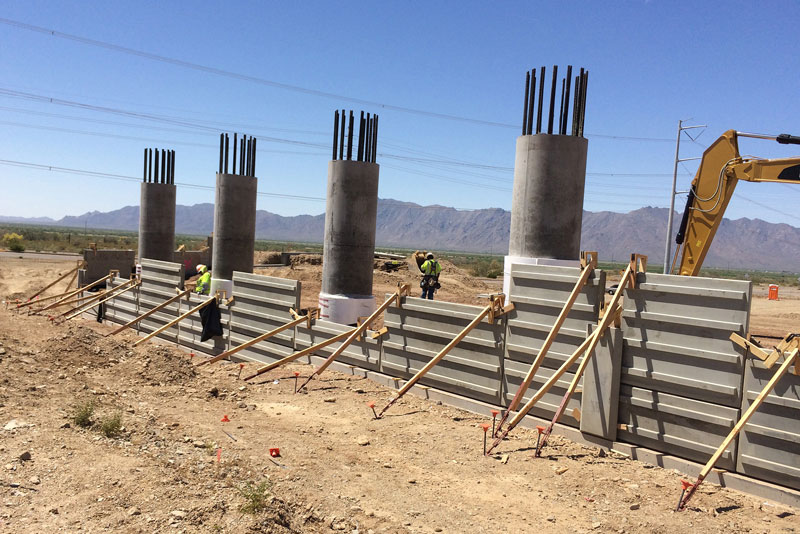Transportation Defined: MSE walls hold up nicely
Transportation Defined: MSE walls hold up nicely

Mechanically Stabilized Earth. Are there any words more thrilling to the human soul?
Honestly? Probably. More likely? Absolutely.
But that doesn’t change the fact that Mechanically Stabilized Earth plays an important role in ADOT infrastructure.
In fact, there’s a good chance you’ve passed by an MSE wall and were none the wiser!
You start by acquiring high quality soil. That soil gets compacted inside retaining walls and reinforced with steel rods. Other material can be, and sometimes is, used instead of steel. But why mess with a reliable compound?
These pieces (wall face, soil, rods) are assembled sort of like a jigsaw puzzle or building blocks. They are then sewn together, if you will, using steel straps.

An MSE wall uses the weight of its own compacted soil to counteract the pressure of anything that may be on top of it, like vehicles or another piece of infrastructure.
Not only are they a safe and stable choice, but Mechanically Stabilized Earth walls are also cost effective! Another main draw to MSE walls is that they can be constructed quickly and relatively easily.
Recent projects that have utilized MSE walls include the Loop 202 South Mountain Freeway (photo bottom right) and the latest Grand Avenue/Bell Road interchange project (photo top right). And it’s not just these ventures that use MSE walls. In fact, ADOT’s been using this approach since the 1970s!
But its history goes back way further than that, perhaps even to the dawn of civilization. Segments of the Great Wall of China have been found to employ a rudimentary reinforced soil technique. And that's held up quite well!
Next time you’re driving around Arizona’s highways, impress your friends! Tell them that you know all about Mechanically Stabilized Earth Walls.
